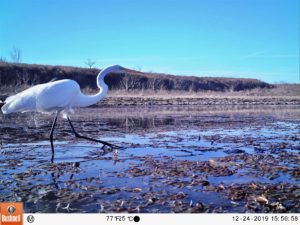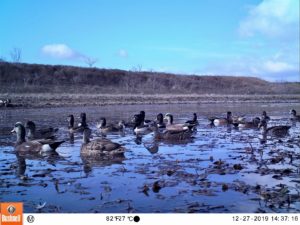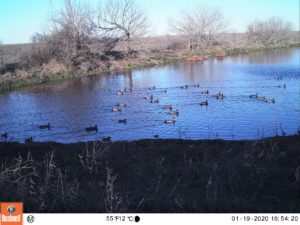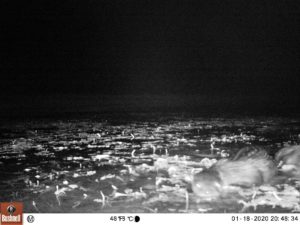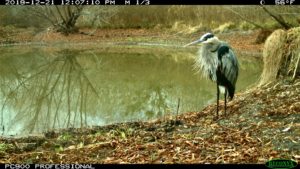Week 34:
We recently had site visits by Texas Parks & Wildlife (TPWD) personnel to assess the next steps for managing our Landowner Incentive Project (LIP), Pastures for Upland Birds (PUB), and USFWS Partners for Fish and Wildlife project areas. Our 2 PUB areas have been sprayed and disked enough that they should be ready for planting with the native grasses seed mix in early spring, after a period of grazing on one and another round of spraying on each to keep the introduced species in the seed bank from outcompeting the natives in the early stages of growth. The LIP area will need to be separated into 2 different cycles at this point, as the northern half is mostly clear of mesquite, allowing for equipment access and subsequent habitat manipulation, but the southern end will need another year’s delay to provide time for mesquite cut-stumping and bulldozing, for effective removal. The next stage for the Partners project is a prescribed burn, for which the TPWD regional fire manager is now developing a burn plan after conducting his site visit. Once the ground is dry enough, I will be disking a strip along the southern border of the area to create a fire break between it and the hay fields. Interestingly, the general rule of thumb for a fire break is that it be twice as wide as the grass is tall, so a 6-foot wide strip of bare ground will be more than adequate. As the other borders of the project area are adjacent to bare crop fields, that will conclude site prep in advance of the burn, so we will just need to wait on appropriate weather conditions, as determined by TPWD. Following the burn, we will begin building the walking trail, preparing other components of the infrastructure for installation, and of course planting the native seed mix, as progress in the development of the site as a Blackland Prairie nature education resource for the local community.
In late January, I accompanied Dr. Tomeček and his students to the East Foundation in South Texas for the lab’s annual coyote capture, for the purposes of collaring a sample of the local population to track their movements over one year. I had the fantastic opportunity to participate as part of the ground crew, which processed and released each coyote after they have been captured with a net gun via helicopter. With the combined efforts of 20 dedicated personnel, we collared and released 31 coyotes in a day and a half, which is a wonderful new record for the project. I look forward to sharing more details and photos about the experience in a future post.
To provide a few eyecatchers for this post, I’ve included a selection of trail camera photos I’ve collected since the last update. The American wigeons finally made an appearance in significant numbers in late December, with ring-necked ducks, gadwalls, green-winged teal, redheads, and northern shovelers as regular guests as well. I’ve also had some otter activity at multiple ponds, along with our local great blue herons, great egrets, and assorted shore birds including killdeer, greater yellowlegs, and Wilson’s snipe.
Dani Miller
Wildlife Biologist
Stiles Farm Foundation
